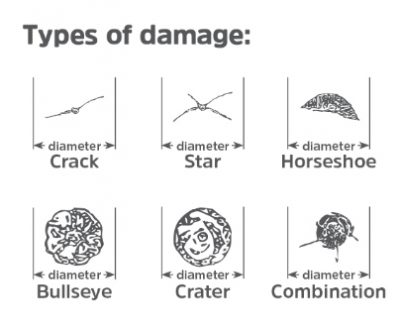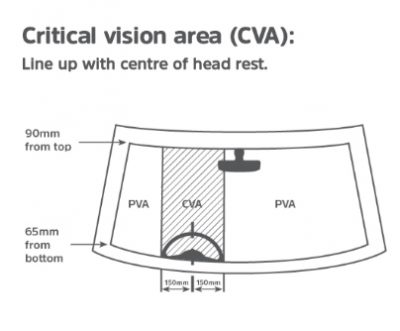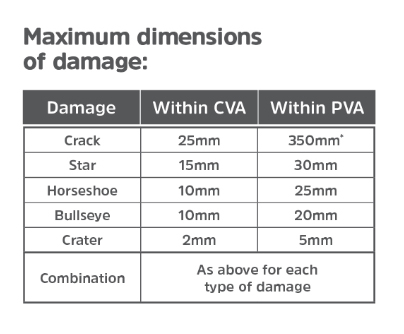THE BEST CHOICE FOR YOUR GLASS
Windscreens are designed to be strong. Made from laminated glass, they protect you and your car from damage and contribute to the overall structure of the vehicle.
Despite their strength, the impact of a small stone to your windscreen can cause anything from a small chip to a crack that runs the length of your windscreen. Generally, if your chip is larger than a $1 coin, you will require a full windscreen replacement.
IDENTIFYING THE DAMAGE
Take a look at the following diagram to identify which type of damage you might have.

LOCATING THE DAMAGE
Windscreen visibility is divided into two main areas which can be seen in the following diagram:
- Critical Vision Area (CVA)
- Primary Vision Area (PVA)
Using this diagram, match the location of your damage to find out if it is contained within the critical or primary area of vision.

LOCATING THE DAMAGE
After identifying what kind of chip you have, you’ll need to measure the diameter of the damage to determine whether repairs can be made, or if a replacement is necessary. Use the following size chart to determine what option is best for your windscreen.

Australian/New Zealand Standard AS/NZS 2366.1:1999 and any revisions.
AS/NZS 2366.1:1999 allows the repair of cracks up to 350mm within the PVA, however Glass Assist recommends not repairing any cracks exceeding 100mm, as any such repair may be compromised and cost prohibitive. This recommendation is in line with industry best practice.
Glass Assist voluntarily adheres to this code to ensure that repaired windscreens are safe and all glass repairs are completed to the highest standards.
STILL UNSURE?
Don’t worry, we’re here to help.
If you are having trouble identifying the kind of chip you have, its location or its size, get in touch with a photo of the damage.

